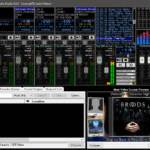Artificial grass has gained immense popularity in recent years due to its numerous advantages over natural grass Artificial grass factory. This comprehensive guide explores the benefits of artificial grass and the manufacturing processes involved in creating this innovative product.
Benefits of Artificial Grass
Artificial grass offers a variety of benefits that make it an appealing choice for homeowners, businesses, and sports facilities alike. Here are some of the most significant advantages:
1. Low Maintenance
One of the primary benefits of artificial grass is its low maintenance requirements. Unlike natural grass, which requires regular mowing, watering, and fertilizing, artificial grass needs minimal upkeep. This translates to significant time and cost savings for homeowners and facility managers.
2. Water Conservation
With increasing concerns about water scarcity, artificial grass presents an eco-friendly alternative. It does not require watering, helping to conserve valuable water resources. This makes it an ideal choice for regions prone to drought.
3. Durability and Longevity
Artificial grass is designed to withstand heavy foot traffic and harsh weather conditions. It typically lasts 10 to 15 years or more, depending on the quality of the material and maintenance practices. This durability ensures a long-term investment for users.
4. Aesthetic Appeal
Modern artificial grass looks and feels remarkably similar to natural grass. With a wide range of colors, textures, and pile heights available, it can enhance the aesthetic appeal of any outdoor space. This versatility allows it to blend seamlessly into various environments, from residential lawns to commercial landscapes.
5. Safety Features
Many artificial grass products come equipped with safety features, such as shock-absorbing padding and non-toxic materials. This makes them an excellent choice for playgrounds, sports fields, and areas where children and pets play, reducing the risk of injury.
Manufacturing Processes of Artificial Grass
The production of artificial grass involves several steps, each crucial in ensuring the final product meets quality standards. Here’s an overview of the manufacturing processes used in artificial grass factories:
1. Material Selection
The primary materials used in artificial grass production include polyethylene, polypropylene, and nylon. Manufacturers carefully select these materials based on desired properties, such as durability, softness, and UV resistance.
2. Yarn Extrusion
The first step in the manufacturing process is yarn extrusion. In this step, plastic pellets made from the selected materials are melted and extruded through a spinneret to create long strands of synthetic fibers. These fibers form the basis of the artificial grass.
3. Tufting
Once the yarn is produced, it undergoes tufting, a process that involves stitching the yarn into a backing material, usually made of polyurethane or latex. The tufting machine creates a dense mat of grass blades, simulating the appearance of natural grass.
4. Coating
After tufting, the backing material is coated with a layer of adhesive to secure the yarn in place. This coating helps enhance the overall durability of the grass and prevents the fibers from shedding.
5. Infill Application
Many artificial grass installations include an infill material, typically composed of sand or rubber, to provide additional stability and cushioning. The infill is spread evenly across the surface of the grass, ensuring the fibers remain upright and enhancing the overall performance.
6. Quality Control
Quality control is a critical component of the manufacturing process. Factories conduct rigorous testing on the finished product to ensure it meets industry standards for durability, safety, and performance. This includes testing for UV resistance, drainage capability, and shock absorption.
7. Packaging and Distribution
Once the artificial grass has passed quality control, it is rolled up and packaged for distribution. Factories prepare the product for shipping to retailers, landscaping companies, and direct customers.
Conclusion
Artificial grass factories play a vital role in producing an eco-friendly, low-maintenance alternative to natural grass. With benefits such as water conservation, durability, and aesthetic appeal, artificial grass is a popular choice for various applications. Understanding the manufacturing processes involved can help consumers appreciate the quality and innovation behind this versatile product.
For more information about artificial grass products, visit our website at World Grass.



